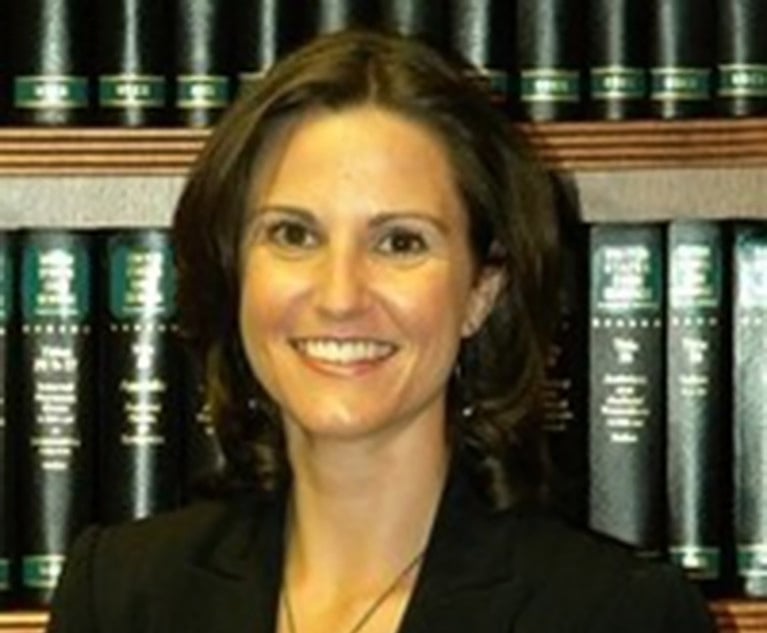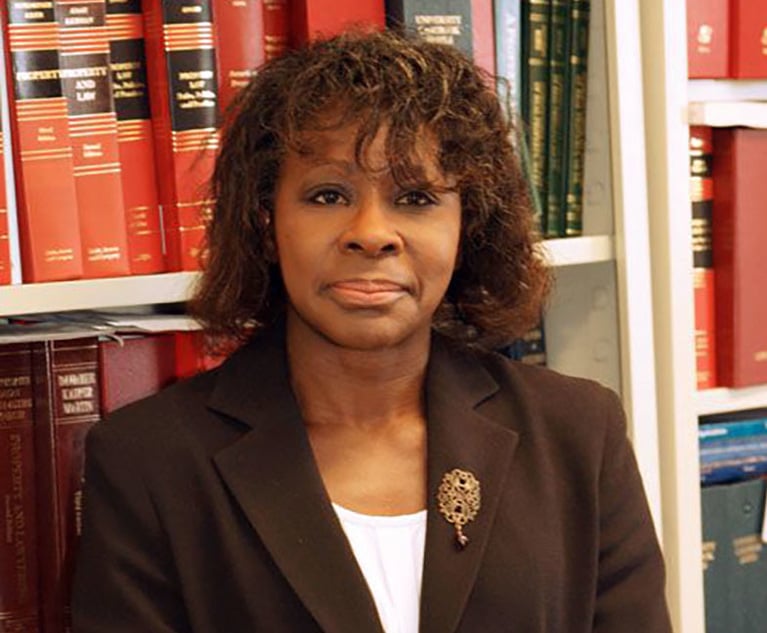Sedona Provides Updated, Practical Guidance for Legal Holds
This article highlights the key provisions of the guidelines set forth by the Sedona Conference Commentary on Legal Holds, emphasizing how parties can put each to practical use to create an effective and defensible preservation program.
February 01, 2019 at 03:40 PM
8 minute read
 By Dilen Royalty-free stock
By Dilen Royalty-free stock
Just over three years have passed since the December 2015 amendments to the Federal Rules of Civil Procedure. In that time, courts have grown increasingly comfortable with the amended Rules' emphasis on proportionality and overhauled spoliation regime. What has not changed, however, is the pivotal role of good-faith, reasonable document preservation efforts in avoiding downstream discovery disputes. In recognition of the continued importance of sound legal hold procedures, the Sedona Conference—an influential e-discovery think tank composed of jurists, lawyers (from both sides of the aisle), academics and other experts in the field—recently published for public comment its Commentary on Legal Holds, Second Edition: The Trigger & The Process. The Commentary sets forth 12 guidelines, each supported by case law and accompanied by illustrations, to help parties meet their duty to preserve “discoverable information,” which is defined as “information that is relevant to the parties' claims and defenses and proportional to the needs of the case.” The Commentary also provides pragmatic suggestions for establishing preservation procedures, addresses the tension between preservation obligations and data protection laws (most notably the EU's General Data Protection Regulation), and offers best practices for the eventual release of legal holds. Below we highlight the key provisions of the guidelines, emphasizing how parties can put each to practical use to create an effective and defensible preservation program.
The Preservation Trigger
The touchstones of the duty to preserve are “reasonable anticipation” or, stated another way, “reasonable foreseeability.” In Guideline 1, Sedona defines these concepts as “notice of a credible probability that [an organization] will become involved in litigation, seriously contemplates initiating litigation, or when it takes specific actions to commence litigation.” Emphasis should be placed on the phrase credible probability—the mere possibility of litigation, without more, is typically not enough to trigger the duty to preserve. But those contemplating filing suit should be mindful that seeking the advice of counsel or sending a cease-and-desist letter may very well be sufficient to mandate an accompanying legal hold.
Guideline 2 instructs that, should a party's preservation decisions later be subject to challenge, it may be easier to demonstrate reasonableness and good faith if that party adhered to “explicit and consistent policies and procedures to guide compliance with its preservation obligations.” Having a procedure for determining whether a duty to preserve has attached can help ensure that the decision is made in a defensible manner. While the process will vary based on the size and nature of each entity, the key is to follow your process and memorialize your adherence to it (but be mindful that your documentation may eventually have to be disclosed, if not to your adversary, then for in camera review).
To help promote the reporting of facts that could bear upon the duty to preserve trigger, Guideline 3 suggests that organizations adopt procedures “for reporting information relating to possible litigation to a responsible decision maker.” The threshold for reporting should be calibrated to “discourage spurious or trivial reports, while still encouraging the candid flow of information.” Individuals within an organization should be trained on how to follow the procedure, and its effectiveness should be evaluated periodically. After receiving a report, organizations' designated decision makers must then embark on a multifactor analysis to decide whether the duty to preserve has in fact been triggered. Among the many factors that could inform this inquiry are the nature of the threat, the entity making it, press or industry coverage, knowledge of similar claims, retention of counsel, and even the prior marking of documents as “attorney work product.”
While hindsight may be 20-20, Guideline 5 counsels against judging preservation decisions in that manner. Instead, they should be evaluated “based on the good faith and reasonableness of the decisions (including whether a legal hold is necessary and how it should be implemented) at the time they were made.” While an adversary may seek to challenge a decision using later-acquired information, the Commentary should serve as a reminder to judges that parties are not capable of preservation clairvoyance.
Appropriate Scope of the Legal Hold
Once an organization determines that it has a duty to preserve, Guideline 6 explains that it should identify and, in most circumstances, notify custodians likely to have relevant information, and it should do so proportionately and “as soon as is practicable.” Although perfection is not required, an organization should “consider the sources of information within its 'possession, custody, or control' that would likely include discoverable information.” As part of this exercise, organizations should consider providing notice to third parties in possession of information that remains under the organization's control.
Per Guideline 7, “[f]actors that may be considered in determining the scope of information that should be preserved include the nature of the issues raised in the matter, the accessibility of the information, the probative value of the information, and the relative burdens and costs of the preservation effort.” If, as is often the case, prior agreement with an adversary is not feasible, organizations should apply their best judgment considering all of the circumstances, including the cost to preserve, the number of custodians, the type of information at issue, and the temporal scope of the dispute. For instance, a party may reasonably decline to preserve inaccessible sources if it concludes—as is often true with disaster-recovery backup tapes—that the burdens and costs of preservation are disproportionate to those sources' potential value. Likewise, absent compelling circumstances, Sedona counsels against an expectation of preservation when organizations have made good-faith decisions not to retain instant messages, voicemails or other transient/ephemeral data in the ordinary course.
The Legal Hold Notice
While verbal notice might theoretically be sufficient in limited contexts, a formal, written legal hold notice is almost always best. In that regard, Guideline 8 provides that “such a notice is most effective when the organization identifies the custodians and data stewards most likely to have discoverable information” and when the notice:
• uses language understandable to all types of recipients
• instructs recipients on how to comply and who can help
• requires recipients to confirm receipt and compliance
• addresses technological nuances that could impede preservation (e.g., auto-delete functionality)
• is periodically reviewed and amended
• is followed up with periodic reminders.
Conceivably, if the information encompassed by the duty to preserve is already maintained under an organization's information governance or record retention policy, a written legal hold notice may be redundant, but issuing one might nonetheless be considered the most prudent course of action.
Organizations may also choose, consistent with Guideline 9, to document the procedures and reasoning behind a particular legal hold. The thinking here is that a party can best defend the contours of a legal hold by citing contemporaneous documentation showing when, why and how it was put into place. A party should not prepare memoranda, however, that it is unwilling to disclose in court should the need arise.
While Guideline 9 is optional, Guideline 10, which advocates for regular monitoring and oversight of legal holds, is important on most matters. This monitoring can take several forms, from issuing reminder notices, to conducting compliance training, to revisiting the scope of the hold as the matter shifts over time.
With so much attention paid to getting legal holds right, too little time is spent making sure they are lifted, or released, when the duty to preserve has lapsed. Guideline 11 reminds litigants that any legal hold process should “include provisions for releasing the hold upon termination of the duty to preserve,” thus permitting the organization to resume its standard document retention policies. As part of their information governance efforts, organizations should consider conducting periodic audits to identify information no longer subject to hold, being careful to cross-check custodians and data sources against other ongoing legal holds to avoid the inadvertent loss of discoverable information in those matters.
Data Protection Laws
The implementation of the EU's GDPR in May 2018, with its harsh penalty structure, has served as a stark reminder to U.S. litigants that they do not operate in a vacuum. Guideline 12 rightfully warns organization to “be mindful of local data protection laws and regulations when implementing a legal hold and planning a legal hold policy outside of the United States.” Under the GDPR, preserving EU data subjects' personal data longer than would otherwise be required likely constitutes data processing, which is only permissible pursuant to narrowly drawn exclusions. To minimize conflicts, the Commentary suggests a tiered approach to preservation in the United States and elsewhere, limiting the extraterritorial scope of preservation to data that is unique and necessary for the specific purpose of the litigation, and only for the period necessary.
An organization can best satisfy its preservation obligations by conducting the thoughtful analysis described in the Sedona Commentary. While not every case will require the full spectrum of best practices contemplated therein, organizations should take the opportunity to vet their existing procedures against these 12 guidelines, refining their policies where appropriate.
Jason Lichter is director of discovery services and litigation support at Pepper Hamilton in New York. Matt Hamilton is a partner in the health sciences department in the firm's Philadelphia office.
This content has been archived. It is available through our partners, LexisNexis® and Bloomberg Law.
To view this content, please continue to their sites.
Not a Lexis Subscriber?
Subscribe Now
Not a Bloomberg Law Subscriber?
Subscribe Now
NOT FOR REPRINT
© 2025 ALM Global, LLC, All Rights Reserved. Request academic re-use from www.copyright.com. All other uses, submit a request to [email protected]. For more information visit Asset & Logo Licensing.
You Might Like
View All


Trending Stories
- 1DeepSeek Isn’t Yet Impacting Legal Tech Development. But That Could Soon Change.
- 2'Landmark' New York Commission Set to Study Overburdened, Under-Resourced Family Courts
- 3Wave of Commercial Real Estate Refinance Could Drown Property Owners
- 4Redeveloping Real Estate After Natural Disasters: Challenges, Strategies and Opportunities
- 5Calif. Fires Should Serve as a Reminder to Fla.’s Commercial Landlords and Tenants Not to Be Complacent
Who Got The Work
J. Brugh Lower of Gibbons has entered an appearance for industrial equipment supplier Devco Corporation in a pending trademark infringement lawsuit. The suit, accusing the defendant of selling knock-off Graco products, was filed Dec. 18 in New Jersey District Court by Rivkin Radler on behalf of Graco Inc. and Graco Minnesota. The case, assigned to U.S. District Judge Zahid N. Quraishi, is 3:24-cv-11294, Graco Inc. et al v. Devco Corporation.
Who Got The Work
Rebecca Maller-Stein and Kent A. Yalowitz of Arnold & Porter Kaye Scholer have entered their appearances for Hanaco Venture Capital and its executives, Lior Prosor and David Frankel, in a pending securities lawsuit. The action, filed on Dec. 24 in New York Southern District Court by Zell, Aron & Co. on behalf of Goldeneye Advisors, accuses the defendants of negligently and fraudulently managing the plaintiff's $1 million investment. The case, assigned to U.S. District Judge Vernon S. Broderick, is 1:24-cv-09918, Goldeneye Advisors, LLC v. Hanaco Venture Capital, Ltd. et al.
Who Got The Work
Attorneys from A&O Shearman has stepped in as defense counsel for Toronto-Dominion Bank and other defendants in a pending securities class action. The suit, filed Dec. 11 in New York Southern District Court by Bleichmar Fonti & Auld, accuses the defendants of concealing the bank's 'pervasive' deficiencies in regards to its compliance with the Bank Secrecy Act and the quality of its anti-money laundering controls. The case, assigned to U.S. District Judge Arun Subramanian, is 1:24-cv-09445, Gonzalez v. The Toronto-Dominion Bank et al.
Who Got The Work
Crown Castle International, a Pennsylvania company providing shared communications infrastructure, has turned to Luke D. Wolf of Gordon Rees Scully Mansukhani to fend off a pending breach-of-contract lawsuit. The court action, filed Nov. 25 in Michigan Eastern District Court by Hooper Hathaway PC on behalf of The Town Residences LLC, accuses Crown Castle of failing to transfer approximately $30,000 in utility payments from T-Mobile in breach of a roof-top lease and assignment agreement. The case, assigned to U.S. District Judge Susan K. Declercq, is 2:24-cv-13131, The Town Residences LLC v. T-Mobile US, Inc. et al.
Who Got The Work
Wilfred P. Coronato and Daniel M. Schwartz of McCarter & English have stepped in as defense counsel to Electrolux Home Products Inc. in a pending product liability lawsuit. The court action, filed Nov. 26 in New York Eastern District Court by Poulos Lopiccolo PC and Nagel Rice LLP on behalf of David Stern, alleges that the defendant's refrigerators’ drawers and shelving repeatedly break and fall apart within months after purchase. The case, assigned to U.S. District Judge Joan M. Azrack, is 2:24-cv-08204, Stern v. Electrolux Home Products, Inc.
Featured Firms
Law Offices of Gary Martin Hays & Associates, P.C.
(470) 294-1674
Law Offices of Mark E. Salomone
(857) 444-6468
Smith & Hassler
(713) 739-1250







